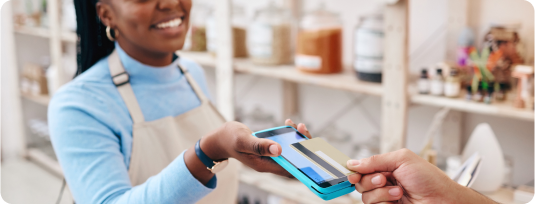Jul 2, 2024
Are Payment Apps Secure? The Truth Behind Secure Transactions

At a time when convenience is paramount, digital payment apps have become an integral part of our daily lives. From splitting money to shopping online, these apps promise convenience and efficiency. However, with convenience comes the important question: Are payment applications secure? In this blog post, we will explore the security aspects of payment apps and reveal the truth behind secure transactions in the digital age.
The Security Landscape of Payment Apps
1. Encryption Protocols:
Popular payment methods use strong encryption protocols to ensure your financial information is secure. Industry standard encryption is used to protect sensitive information during transmission, such as SSL (Secure Socket Layer) and TLS (Transport Layer Security) To understand the encryption methods used by your chosen payment application function, it is important to consider its safety.
2. Multi-Factor Authentication (MFA):
Multifactor authentication adds another step to the login process for additional security. This usually requires a combination of password, PIN, or biometric verification. Payment applications including MFA play an important role in protecting your account from unauthorized access.
3. Regular Security Audits:
Trusted payment apps conduct regular security audits and analyses to identify and address potential vulnerabilities. This approach ensures that the application’s security features are up-to-date, protecting users from emerging threats in the digital landscape.

Are Payment Apps Secure? The Truth Behind Secure Transactions
User Action for Enhanced Security
1. Strong Passwords:
Creating a strong, unique password for your payment app account is an important step in ensuring it’s secure. Avoid using easy-to-guess text and consider including a mix of upper and lower case letters, numbers, and special characters.
2. Device Security:
The security of the payment device is equally important. Implementing biometric locks, updating operating systems, and installing popular security software are important actions to protect against potential threats
Risks and How to Reduce Them
1. Phishing attacks:
Users should be vigilant against phishing attacks that attempt to trick individuals into revealing sensitive information. Checking the authenticity of connections, avoiding clicking on suspicious links, and reporting potential fraud are effective ways to reduce the risks of phishing
2. Account Monitoring:
Regularly monitoring your payment app's activities helps you quickly detect any unauthorized or suspicious activity. Most payment apps provide notifications in real-time, keeping users up to date with every transaction from their account.
Final Note
When it has to do with digital transactions, the safety of payment apps is a great concern for users. By understanding the security features, implementing best practices, and choosing a reputable app like Nearpays, users can confidently embrace the convenience of digital payments without compromising their financial security.
Take the Next Step with Nearpays
When we talk about the security of payment apps, Nearpays fits this category. With our state-of-the-art encryption, robust multifactor authentication, and a promise of regular security audits, we prioritize the security of users’ financial information.
Ready to experience a secure and convenient payment app? Download Nearpays today and enjoy peace of mind with every transaction. Your financial security is our priority – make the smart choice for seamless and safe digital payments.




